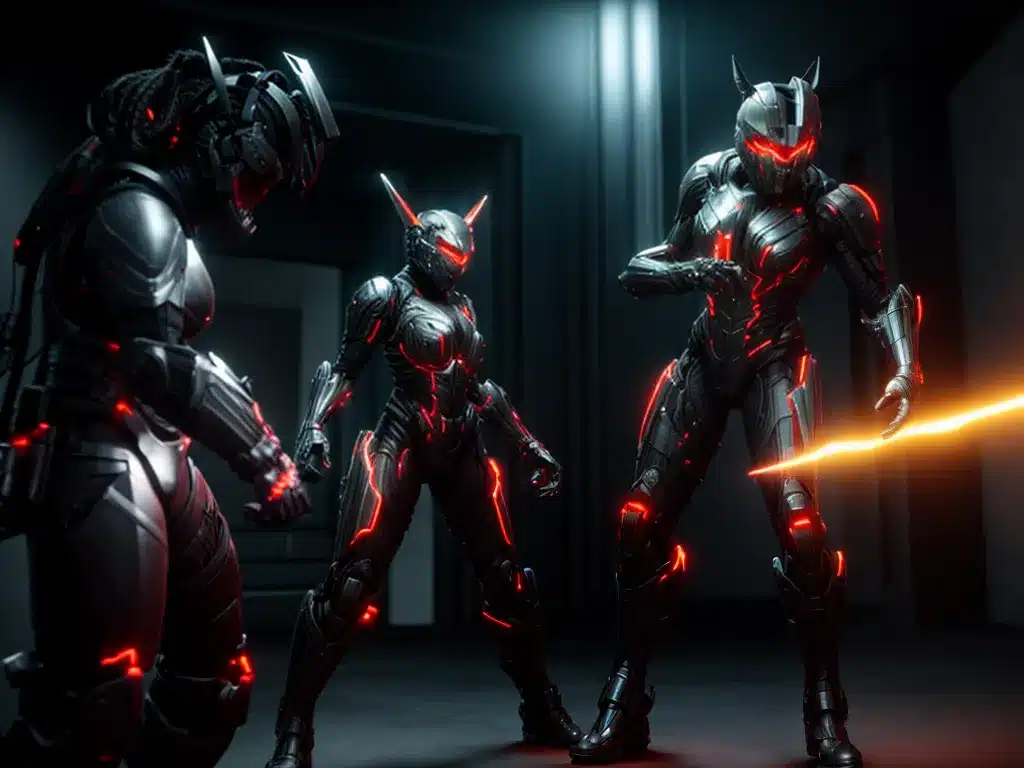
Unreal Engine 5 brings groundbreaking new technologies and workflows to game developers. Three of the most exciting upgrades are Lumen, Nanite, and virtual shadow maps. These major graphics innovations aim to streamline game creation and let developers focus more on creativity.
Lumen: Dynamic Global Illumination
Lumen is an unparalleled real-time global illumination solution. It immediately reacts to scene and light changes.
Traditionally, baking lighting is a time-consuming process. Artists painstakingly light scenes while accounting for how materials bounce and absorb light. Adjustments require rebaking lighting – which locks down levels for lighting tweaks. Lumen removes these constraints.
I can now make lighting changes and instantly see photorealistic results. There’s no need to stop and rebake. It lets me iterate quickly to nail down the desired mood and ambience.
Lumen works by using GPU ray tracing acceleration via virtual shadow maps. Scene geometry and lighting data feed into Lumen to determine global illumination. Lumen immediately re-solves global lighting after changes. This makes lighting as dynamic as everything else in the scene.
Key Lumen Benefits
- Instantly updates global lighting without baking delays
- Frees artists to experiment creatively with lighting
- Integrates with other Unreal 5 systems like Nanite
- Far faster and more flexible than traditional bake workflows
- Achieves cinema-quality global illumination in real-time
Lumen empowers developers like me to focus on creating incredible lighting scenarios. I gain unmatched lighting flexibility without technical roadblocks.
Nanite: Cinematic-Quality Geometry
Nanite virtualized micropolygon geometry revolutionizes scene detail. Artists can build games with massive amounts of geometric detail and endlessly complex shapes.
Traditionally polygon budgets constrain scene size and detail. Low polygon models lack realism. High detail assets are costly. Nanite solves this through virtualized geometry using nanite polygons.
A nanite is an invisible micropolygon 400x smaller than a pixel. Assets use billions of nanites to create shapes. Nanite counts are virtualized – the actual poly count drawn is optimized for the scene.
This means assets can use crazy high polygon detail. A statue can have 1 billion polygons for ultra-realism. But it may only draw 10,000 nanites onscreen due to distance. This virtualized micropolygon approach unlocks unlimited geometric detail.
Why Nanite is Groundbreaking
- Assets can use extreme detail up to billions of polygons
- Virtualized nanite system optimizes drawn detail for the scene
- Eliminates traditional poly count budgets and LODs
- Facilitates mega-scans and photogrammetry for true-to-life assets
- Integrates with Lumen for detailed dynamic global illumination
Nanite grants me tremendous creative freedom. I can craft intricately detailed assets that reveal subtle nuances as the camera draws near. And integrating with Lumen creates a new level of realism.
Virtual Shadow Maps for Realistic Soft Shadowing
Shadows immediately give a scene greater depth and realism. Unreal Engine 5 uses virtual shadow maps for softer, more accurate shadowing.
Traditional shadow mapping suffers from aliased “jagged” shadows. This is especially noticeable for shadows from distant lights. It stems from low-resolution shadow maps.
Virtual shadow maps solve this by using many shadow maps behind the scenes. The system renders sliced shadow maps at optimal resolutions based on the scene. It combines them into one smooth, high-res shadow map.
The result is cinema-quality soft shadows with smooth edges. Shadows from both near and distant lights benefit. This more accurately captures how light behaves in the real world.
Why Virtual Shadow Maps are a Game Changer
- Creates smooth, artifact-free soft shadowing
- Eliminates jagged “aliasing” artifacts from shadow maps
- Combines multiple virtual shadow maps intelligently
- Works automatically for all scene lighting
- Integrates with Nanite and Lumen for advanced real-time graphics
Now I can easily achieve soft, natural shadows that bring *my*** scenes to life. It’s one more way Unreal Engine 5 removes technical limitations.
Unreal Engine 5 Empowers Creative Freedom
Unreal Engine 5 is a revolutionary step forward for real-time graphics. Lumen, Nanite, and virtual shadow maps transform lighting, geometry, and shadows.
These groundbreaking technologies enable me to realize *my creative vision. *I can craft incredibly detailed worlds with photorealistic lighting. Unreal Engine 5 puts the power in *my*** hands to bring stunning virtual worlds to life.












